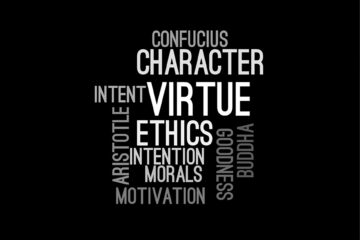![]()
Introduction:
Dharma is a Sanskrit word. Its origin root comes from the word ‘dhr’ which means to sustain or hold. The Rig Veda is the first source of the meaning of Dharma. There are various interpretations to the concept of Dharma through Srutis and Smritis were recognised as Sanatana dharma or eternal law. According to the Karna Parva of the Mahabharata, Verse-58 in Chapter 69 defines the function of Dharma in society
“Dharma is for the stability of the society, the maintenance of social order and the general well-being and progress of humankind. Whatever conduces to the fulfilment of these objects is Dharma; that is definite. This was referred in the case of S. Narayana Deekshitulu v. State of Andhra Pradesh and Ors.[1]
Dharma is the underlying human nature, life and behaviour. The concept of Dharma in the Atharva Veda is “Prithivim Dharmana Dhritam” which means the whole world is upheld by dharma. The law compilers such as Manu and Kautilya brought the notion of Dharma in the public domain as the concept of dharma was the foundation for social and moral regulations for an individual in society.
Dharma in Indian Jurisprudence
In ancient India, dharma and law were not different concepts in the Dharma Shastras Smrities and the Arthasastra, the concept of law, justice and religion and invariably justice was equated to Dharma[2]. According to Max Muller, the concept of Dharma is the Indian version of natural law[3]. Emphasis on the fact has been laid that who exercises political power must abide by the principles of Dharma, as Dharma governs every sphere of activity including governance of the country. The role of a king is clearly defined in the Dharma Shastras as the concept of Dharma Rajya where a king could not make laws on his own whims and fancies and it was essential for him to exercise his powers in conformity with the principle of Dharma.
The resemblance can be clearly be seen in Article 13(2)[4] of the constitution where the State shall not make any law which takes away or abridges the rights conferred by this Part and any law made in contravention of this clause shall, to the extent of the contravention be void. The resemblance can be further seen in the landmark judgement of the Supreme court that is Kesavananda Bharati vs State Of Kerala And Anr[5], where the Supreme court had established the basic structure doctrine restricting the amending power of the state and held that any law that goes against the basic structure of the constitution is void. It is clear that the concept of Human rights and fundamental rights were an outcome of dharma and the Vedic ages as evident from the case of Maneka Gandhi v. Union of India, where the supreme court in its obiter pointed out that these fundamental rights are basic values cherished by the people from the Vedic ages.
Dharma also focuses on the responsibility of people towards otter individuals and the state. Whether it be pitra dharma, putra dharma or matra dharma or the Rashtruya dharma (responsibility of the individual towards the state) and to enjoy rights and freedoms one must fulfil his duty or dharma. The resemblance to this very principle can also be seen in our Indian constitution under article 51A of the constitution[6] that talks about the fundamental duties of a citizen of India. This can be further seen in the case of the State of Rajasthan vs the Union of India[7] 7, where the SC has stated that legal rights in the strict sense are correlatives of legal duties legal right are the interests of people which law protects by imposing duties. The basic essence of positive liberty is based on this very principle that one’s liberty can not hinder anyone else from enjoying his or her liberty. The basic reasoning behind imposing reasonable restrictions for example article 25 of the Indian constitution gives the right to people subject to public order, morality and health and to the other provisions of this Part, all persons are equally entitled to freedom of conscience and the right freely to profess, practise and propagate religion[8] but this right is also not absolute as you can tell by reading Article 25 of the Indian constitution it is subject to public order, morality and health that is it is the duty of an individual not to disturb all of the above while exercising this very right.
The supreme court’s logo and the words that are inscribed on the logo also shows the resemblance with Dharma that is Yato Dharma Tato Jaya” the words mean that where there is Dharma there is victory.
The resemblance of dharma can also be seen in Indian jurisprudence when you compare the ever-widening scope of Article 21 of the constitution[9] and Dharma as discussed above Dharma is present in every sphere of one’s life in a similar fashion Article 21 of the constitution covers a plethora of rights that is the right to life and liberty, for example, the right to privacy and internet as a fundamental right comes under the ambit of this very article there are many fundamental rights that have been justified or protected by courts under this very article.
The Secular Nature of Dharma
One might argue that Dharma as a concept has its origin in the Vedas and other religious texts and might confuse Dharma as religion and might as the same argument that as a secular nation we are giving the concept of dharma that has its origins in texts that are essential to a particular religion we cannot give so much importance to the concept of Dharma but that is not the case here Justice J.Hansaria in A.S. Narayana Deekshitulu v. State of Andhra Pradesh and Ors,[10] stated:
“Religion is enriched by visionary methodology and theology, whereas dharma blooms in the realm of direct experience. Religion contributes to the changing phases of a culture; dharma enhances the beauty of spirituality. Religion may inspire one to build a fragile, mortal home for GOD; Dharma helps one to recognize the immortal shrine in the heart.”
In the same judgement, Justice J.Hansaria concluded that the word religion in the article has to be understood not in a narrow sectarian sense but encompassing our ethos.[11]
Further in another landmark judgement of the court, that is in the case of N.P.Amrutesh and Another v. State of Karnataka and Ors,[12] it was observed by the court, that the supreme court stated that Dharma is being used by the courts as prestigious as Constitutional benches and used in place an equivalent of duty and truth and even the flag contains the Dharma Chakra of Ashoka.
Conclusion
Dharma and Indian jurisprudence have the same goal. The function of Dharma and law are the same, where it socially and morally regulates individuals and brings harmony. Society law also performs the same function. Dharma is, in fact, the rule of law as stated by Max muller and the Indian state functions on the principle of Dharma wherein the case of Secretary, Ministry of Information & Broadcasting v. Cricket Association of Bengal & ANR.[13]
the Supreme court upheld the fact that Dharma till date regulates law by means of morality outside the courts. Dharma has played an important role in various judgements whether it be the basic structure doctrine or the doctrine of fundamental duties.
The constitution of India which is considered an important aspect of Indian jurisprudence also has a Dharma or a role to fulfil as noted by the SC in the case of Dattatraya Govind Mahajan v. State of Maharashtra.[14] There is no doubt in my mind that the phrase Prithivim Dharmana Dhritam” is true and Dharma exists continues and will continue to influence and be an important part and guiding principle for law formation in the future and human morality and human actions in the future.
References:
[1] 1996 AIR 1765
[2] N.C. SEN GUPTA, EVOLUTION OF ANCIENT INDIAN LAW 336 (Calcutta 1954).
[3] Bhavan Journal, p.123, Vol. XX, No. 1, 1973.
[4] Article 13(2) of the Indian constitution
[5] (1973) 4 SCC 225
[6] Article 51 A of the constitution
[7] 1978 SCR (1) 1
[8] Article 25 of the Indian constitution
[9] Article 21 of the constitution
[10] Supra in 1st citation
[11] Supra in 1st citation
[12] AIR 1995 Kant 290
[13] 1995 AIR 1236
[14] 1977 AIR 915



0 Comments